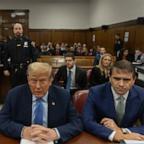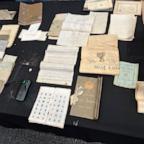Styrofoam Installed in Hall of Fame
Joins hip replacements and wireless TV remote controls as best inventions.
WASHINGTON Feb. 14, 2008— -- The inventors of Styrofoam, disposable medical trays and Bose audio technology are among the 18 new members of the National Inventors Hall of Fame. The 2008 inductees were to be announced Thursday at an event on Capitol Hill. Previous honorees include telephone inventor Alexander Graham Bell and Joseph Glidden, creator of barbed wire. "People make inventions all the time and don't even realize it," said Amar Bose, a 2008 inductee and creator of advanced speaker and audio technology. "They come from people who are motivated or driven to make things better." Nick Holonyak Jr., was honored for inventing the first visible light-emitting diodes, or LEDs, used in everything from traffic signals to computers to Christmas lights. He said that people think LED technology is new, "But no, we've been working on this and working on this," for about 45 years. The Akron, Ohio-based hall was founded by the U.S. Patent and Trademark Office and the National Council of Intellectual Property Law Associations. It has inducted members since 1973 and will have honored 389 inventors with the new class, which includes seven living and 11 deceased inventors. Two induction ceremonies will take place in May in Akron. William Murphy Jr., honored for a variety of medical inventions, recalled that as a medical intern he performed a spinal tap procedure using a dull needle. "You know when you're involved with something that is very personal, it seems to me that you have a lot of ideas about how you should do it," he said. This experience inspired him to invent the first disposable surgical tray, which contained fresh, sealed equipment specifically needed for a particular surgery. "It would have to replace everything that had been used," he said of his invention. Other honorees: -- Ruth Benerito for wrinkle-free cotton. -- Erna Hoover for computerized telephone switching, which made it possible to monitor the frequency of incoming calls. -- Amos Joel Jr. for the switching concept for cellular phones, which made service continual when a caller moves from one region to another.




